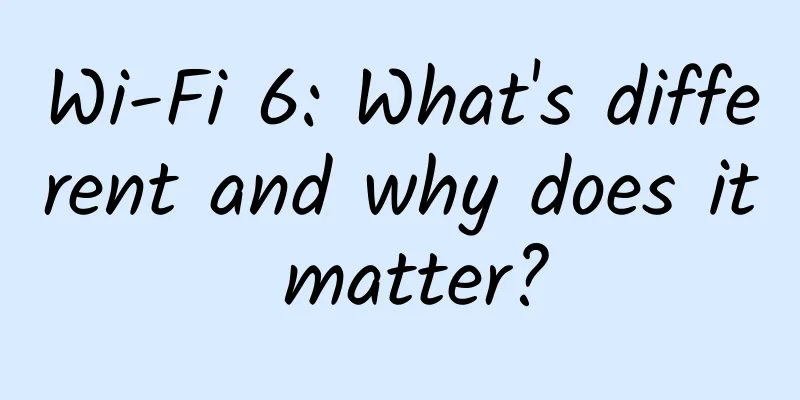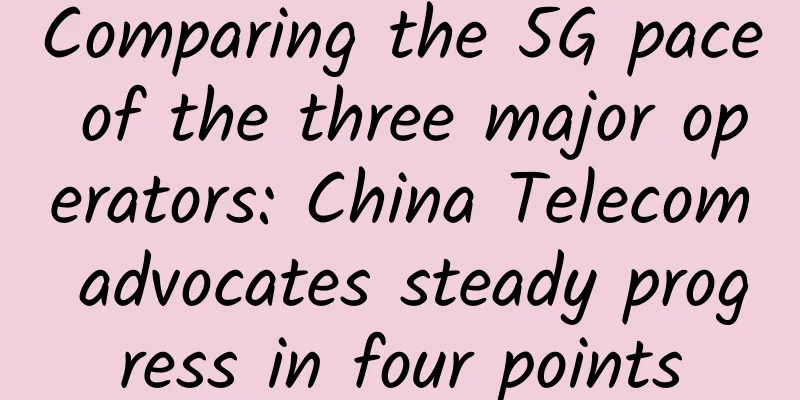Wi-Fi 6: What's different and why does it matter?

|
Wi-Fi 6 is the next generation wireless standard that is faster than 802.11ac. In addition to speed, it will provide better performance in crowded areas, from stadiums to your own well-equipped home. Wi-Fi 6 was officially released at the end of 2019, and hardware that supports Wi-Fi 6 will be generally available in 2020. Wi-Fi now has version numbersWi-Fi Alliance logo for device manufacturers Yes, Wi-Fi has version numbers now! Even those confusing old Wi-Fi standard names like “802.11ac” have been renamed to user-friendly names like “Wi-Fi 5.” Here are the Wi-Fi versions we saw:
The Wi-Fi Alliance also announced that it wants to see these numbers appear in software so that users can tell which Wi-Fi network is newer and faster when they connect their smartphone, tablet or laptop. So, we'll see Wi-Fi version numbers on our phones, tablets or laptops. The older versions of Wi-Fi aren't widely used, and they haven't been officially renamed. But if they needed to be renamed, this is what they would be called:
Faster Wi-FiAs always, the latest Wi-Fi standards offer faster data transfer speeds. If using a Wi-Fi router on a single device, Wi-Fi 6 should offer up to 40 percent higher maximum potential speeds compared to Wi-Fi 5. Wi-Fi 6 does this by encoding data more efficiently, which results in higher throughput. Basically, more data is packed onto the same radio waves. The chips that encode and decode those signals are getting more powerful to handle the extra work. This new standard even improves the speed of 2.4GHz networks. While the industry has moved to 5GHz Wi-Fi to reduce interference, 2.4GHz is still better at penetrating solid objects. 2.4GHz shouldn't have as much interference as older cordless phones and wireless baby monitors. Longer battery lifeThe new Target Wake Time (TWT) feature means your smartphone, laptop, and other Wi-Fi-enabled devices should also have better battery life. When an access point talks to a device (like your smartphone), it can tell the device exactly when to put its Wi-Fi radio to sleep and when to wake it up to receive the next transmission. This saves power because it means the Wi-Fi radio can spend more time in sleep mode. That means longer battery life. This will also help low-power "internet of things" devices that connect via Wi-Fi. Performs better in crowded placesWi-Fi tends to struggle when there are a lot of Wi-Fi-enabled devices in a crowded place. Imagine a busy stadium, airport, hotel, mall, or even a crowded office with everyone connected to Wi-Fi. We may experience slower Wi-Fi. The new Wi-Fi 6, also known as 802.11ax, combines a number of new technologies to help address this problem. Intel claims that Wi-Fi 6 will increase average speeds per user by "at least four times" in crowded areas with many connected devices. This doesn’t just apply to busy public places. It can also apply to your home if you have a lot of devices connected to your Wi-Fi, or if you live in a dense apartment building. How Wi-Fi 6 fights congestionThe various features Qualcomm touted as making up "11ax" are now Wi-Fi 6 For the average user, you don’t really need to know the details. A Wi-Fi 6 access point with Wi-Fi 6 equipment will work much better. But here’s what’s going on inside the box: Wi-Fi 6 can now divide a wireless channel into a large number of sub-channels. Each of these sub-channels can carry data intended for different devices. This is achieved through something called Orthogonal Frequency Division Multiple Access, or OFDMA. Wi-Fi access points can communicate with more devices at the same time. The new standard also improves MIMO — multiple-input/multiple-output. This involves multiple antennas that allow an access point to communicate with multiple devices at the same time. With Wi-Fi 5, an access point could communicate with devices at the same time, but those devices couldn't respond at the same time. Wi-Fi 6 has an improved version of multi-user, or MU-MIMO, that lets devices respond to a wireless access point at the same time. Access points that are close to each other may be transmitting on the same channel. In this case, the receiver listens and waits for a clear signal before replying. With Wi-Fi 6, access points that are close to each other can be configured to have different Basic Service Set (BSS) “colors.” This “color” is just a number between 0 and 7. If a device is checking to see if the channel is all clear and monitoring, it may notice a weak transmission and a different “color.” It can then ignore this signal and continue transmitting without waiting, so this will improve performance in crowded areas, also known as “spatial frequency reuse.” These are just some of the most interesting things, but the new Wi-Fi standard also includes many smaller improvements. For example, Wi-Fi 6 will also include improved beamforming. Look for "Wi-Fi 6" and "Wi-Fi 6 Certified"When buying a new device, users don’t pore over spec sheets and try to remember whether 802.11ac or 802.11ax is the latest standard. The device maker can say it has “Wi-Fi 6” or “Wi-Fi 5.” We’ll also start seeing a “Wi-Fi 6 Certified” logo on devices that have gone through the Wi-Fi Alliance’s certification process. Before, there was a “Wi-Fi Certified” logo that didn’t tell you which generation the product was from unless you looked at the specs. These Wi-Fi 6 routers are also expected to support WPA3 to make it easier to securely connect to Wi-Fi networks, but WPA3 support is not required. When can you get it?Prior to 2020, some routers may have advertised "802.11ax technology," but Wi-Fi 6 had not yet been finalized and there were not any Wi-Fi 6 client devices available. The Wi-Fi Alliance finalized the standard in 2019, and hardware supporting Wi-Fi 6 was released in late 2019 and throughout 2020. You don't even have to think about it too much — going forward, new routers, smartphones, tablets, laptops, and other Wi-Fi-enabled devices will come equipped with the technology. As always, both the sender and receiver need to support the latest generation of Wi-Fi for you to get the benefits. In other words, if you want Wi-Fi 6 performance on your phone, you'll need a wireless router (access point) and a smartphone that supports Wi-Fi 6. If you connect a laptop that only supports Wi-Fi 5 to your Wi-Fi 6 router, that particular connection will operate in Wi-Fi 5 mode. But the router will still be able to use Wi-Fi 6 with your phone at the same time. There is also a "Wi-Fi 6E" now, which refers to Wi-Fi 6 above 6 GHz, rather than the typical 2.4 GHz or 5 GHz. Of course, Wi-Fi 6E hardware will be available after Wi-Fi 6 hardware, and currently WiFi6 devices and routers are already standard for new products. Version numbers are nice but not mandatoryWe’re excited about the version number. This is a simple, easy change that’s long overdue. It should make Wi-Fi easier for the average person to understand. After all, many people can get faster Wi-Fi speeds by upgrading their home routers — but not everyone knows that. However, the Wi-Fi Alliance does not have the power to force companies to use these version numbers, although they "encourage" companies to adopt them. Some manufacturers may ignore these version numbers and call the new generation of Wi-Fi "802.11ax." Many companies may also not rush to rename the existing 802.11ac to Wi-Fi 5. Of course, from a consumer perspective, we expect most companies to quickly jump on board with the new naming scheme. |
<<: Three tips for solving bandwidth issues in small government offices
Recommend
Analysis: Which businesses need a dedicated wireless network?
Over the past few years, private wireless network...
Inventory | 7 major acquisitions in the cybersecurity field recently
Cybersecurity is more important today than ever b...
What happens from URL input to page display?
[[312427]] Preface When you open a browser, enter...
5G networks are moving towards cloud, virtualization and network slicing
As some telecom operators seek to accelerate the ...
China Mobile completes R16 version 2.6G+700M SUL uplink enhancement test
Recently, China Mobile and MediaTek completed the...
Core Network Evolution (RCAF, PFDF and TSSF) - 3GPP REST API
Looking back at the diversity of technology devel...
TripodCloud: Large bandwidth CN2 GIA line VPS hosting 18% discount starting at $59/year, optional large hard disk
TripodCloud is an early-established Chinese hosti...
The U.S. "Officialdom Exposed" in the ZTE Incident
The much-watched ZTE ban incident has experienced...
Empowering online learning, H3C University won the "Bio-Best Ecological Platform Application Award"
On November 19, 2020, the 12th CEFE China Enterpr...
After the fourth retail revolution, three experts from WOT tell you what real smart retail is!
[51CTO.com original article] On June 21, the WOT2...
TMR: By 2026, the global smart manufacturing platform market will reach $15.93 billion
According to TMR, the global smart manufacturing ...
Working together to develop and forge ahead, Fuqianla officially released its 2018 strategic plan
On December 12, Fuqianla, an Internet financial c...
Inter-thread communication in concurrent programming
The goal of thread communication is to enable thr...
HostYun: Hong Kong CN2 GIA line Tsuen Wan data center AMD high-performance VPS monthly payment starting from 19.8 yuan
HostYun has added a new VPS product in Hong Kong&...
No-nonsense version: What are the common high-risk ports? Why should you close them?
Common high-risk ports (1) TCP port 21: The defau...









